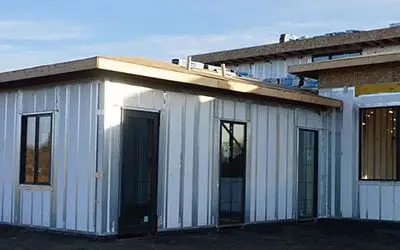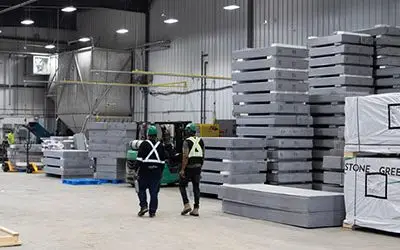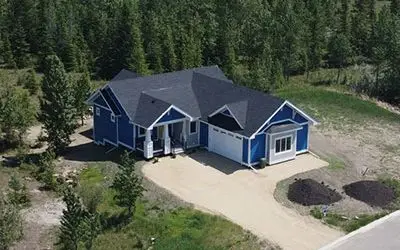ICF construction has been a go-to building method for quite some time, but as technology changes and new innovations such as the Greenstone ICE Panel hit the market, builders, developers, and homeowners alike are starting to see the benefits in making the switch.
Insulated Concrete Form (ICF) is a stay-in-place formwork system that is made out of Expanded Polystyrene (EPS), nylon ties and an engineered combination of rebar and concrete at the center.
Insulated Composite Envelope (ICE) Panels are a lightweight, engineered combination of EPS and light gauge steel framing.
High performance building envelopes tend to have similar characteristics when it comes to R-values, addressing thermal bridging, and airtightness. ICF construction and ICE Panels both perform well in these categories:
- Both ICF blocks and ICE Panels are made using inert materials, which means they do not provide nutrition for wood-burrowing pests, and have extremely long life cycles.
- Both solutions deal well with thermal bridging as they both provide a thermal break from external temperatures.
- Both assemblies are airtight.
- The R-value on a 5.5″ ICE Panel wall is the same as a 13.5″ wall built with ICF. This is due to the configuration of the structure.
Despite having some great characteristics in common, there are still some areas where the ICE Panel reigns supreme.
Ease of Installation: ICF blocks need to be installed by a skilled tradesperson. Bowed walls, hollows in the wall, and blowouts are common issues among amateur installers. ICF is not very forgiving, and if you make a mess of it you may need to start over. ICE Panels are forgiving. The panels are structurally engineered, meaning no additional reinforcement (such as rebar and concrete) is needed. This already makes installation far easier and less labour intensive than building with ICF. Installation errors are also easily corrected. Once an ICE Panel is placed, if a mistake has been made, it is easy to adjust or disassemble accordingly.
Product Weight: ICF construction is very heavy, which adds to the overall cost of your project. ICE Panel construction is one third the weight of its ICF counterpart, so it does not require the same type of structural support. Often, a spread footing is all that’s required to build on. This difference can have dramatic trade-offs in cost reduction when choosing to use the ICE Panels.
Construction Costs: An ICE Panel project generally cost less than an ICF build. A lot of people want the added thermal performance of ICF without the added premium cost. ICE Panels offer significant performance increases over traditional construction, but the price point is very competitive. This is a major reason we are seeing a shift towards building with ICE Panels over traditional construction.
If you are considering ICF for your next project, consider ICE Panels as an alternative. You’ll reduce labour costs, save money from day one, and complete your building envelope with ease and speed.
We’re here to answer all your questions. Give us a call at 204-726-1426 or send your email to sales@gsbp.ca.



